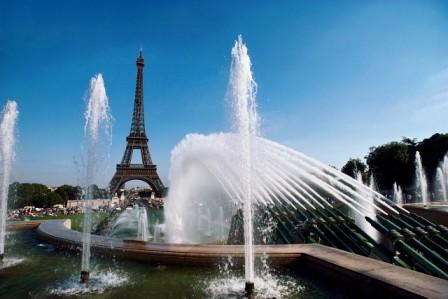France Education French
centers of learning, beginning with the French universities of the
Middle Ages, particularly in the University of Paris, founded in the
12th century, and continuing down to the modern universities and
technical schools, all have served as academic models throughout the
world. Among the French educators who had notable influence are Peter
Abelard in the 12th century, Michel de Montaigne in the 16th century,
François Fénelon and Jean Jacques Rousseau in the 18th century, and
Victor Cousin in the 19th century. French
centers of learning, beginning with the French universities of the
Middle Ages, particularly in the University of Paris, founded in the
12th century, and continuing down to the modern universities and
technical schools, all have served as academic models throughout the
world. Among the French educators who had notable influence are Peter
Abelard in the 12th century, Michel de Montaigne in the 16th century,
François Fénelon and Jean Jacques Rousseau in the 18th century, and
Victor Cousin in the 19th century. The
centralization of school administration, with the state as the
fundamental power in education, evolved under the leadership of Napoleon
between 1806 and 1808. The modern educational system is based on laws
enacted between 1881 and 1886 under the influence of Jules Ferry,
minister of education. These laws provided for free, compulsory public
education entirely under government control. Among later modifications
were the establishment of free tuition in secondary and technical
schools; the separation of church and state in education in 1905; the
legislation of aid to private schools, including those with religious
affiliations, in 1951 and 1959; and, in 1959, the extension of
compulsory school attendance to the age of 16. In response to strong
student demands, educational reforms were approved in 1968 by President
Charles de Gaulle and his cabinet. Specifically, the new system did away
with the control of budgets, curricula, and hiring throughout the nation
by the ministry of education. Instead, it established educational units
at various levels, gave faculties control of hirings and promotions, and
gave students a greater voice in university life. The authority of
university professors occupying lifetime chairs to vote on new
appointments was abolished, and the establishment of more democratic
departmental structures on a subject basis was indicated for
universities. Several of the large universities were restructured into
smaller units, and the number of French universities increased from 23
to about 70 in the 1980s. The
centralization of school administration, with the state as the
fundamental power in education, evolved under the leadership of Napoleon
between 1806 and 1808. The modern educational system is based on laws
enacted between 1881 and 1886 under the influence of Jules Ferry,
minister of education. These laws provided for free, compulsory public
education entirely under government control. Among later modifications
were the establishment of free tuition in secondary and technical
schools; the separation of church and state in education in 1905; the
legislation of aid to private schools, including those with religious
affiliations, in 1951 and 1959; and, in 1959, the extension of
compulsory school attendance to the age of 16. In response to strong
student demands, educational reforms were approved in 1968 by President
Charles de Gaulle and his cabinet. Specifically, the new system did away
with the control of budgets, curricula, and hiring throughout the nation
by the ministry of education. Instead, it established educational units
at various levels, gave faculties control of hirings and promotions, and
gave students a greater voice in university life. The authority of
university professors occupying lifetime chairs to vote on new
appointments was abolished, and the establishment of more democratic
departmental structures on a subject basis was indicated for
universities. Several of the large universities were restructured into
smaller units, and the number of French universities increased from 23
to about 70 in the 1980s.Elementary and Secondary Schools For administrative purposes, the country is divided into 27 educational districts called académies. In the late 1980s some 4.1 million pupils annually attended about 47,000 elementary schools. In addition, about 5.4 million students attended some 11,200 secondary schools. Universities and Colleges Approximately 1.2 million students were enrolled annually at university and college facilities in France in the late 1980s. Besides the Universities of Paris I-XIII, noted French institutes of higher education include the Universities of Aix-Marseille I-III, the Universities of Lille I-III, the Universities of Lyon I-III, the Universities of Nancy I-II, and the Universities of Strasbourg I-III. | ||||||||||||||||||
